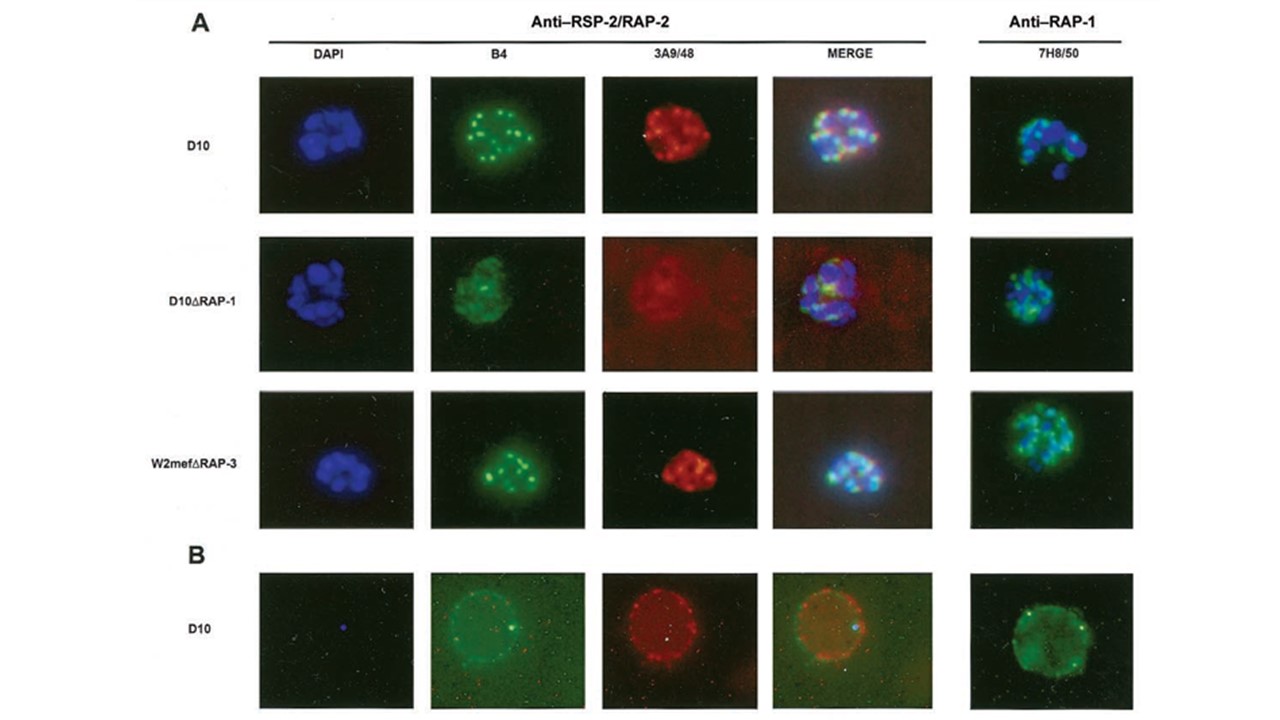Loss of erythrocyte tagging after rhoptry-associated protein (RAP)–1 disruption. A, Air-dried immuno-fluorescence assay (IFA) of D10, D10DRAP1, and W2mefDRAP3 schizonts using monoclonal antibodies (MAbs) B4 (anti–ring surface protein [RSP]–2/RAP-2), 3A9/48 (anti–RAP-2), and 7H8/50 (anti RAP-1). RAP-1 and RAP-3 have been disrupted in D10DRAP1 and W2mefDRAP3, respectively. MAbs B4, C10, 3A9/48, and 7H8/50 exhibit a punctuated fluorescence pattern with D10 and W2mefDRAP3 schizonts. Typical rhoptry staining is observed with 7H8/50 both in mutants and wildtype parasites and with B4 and 3A9/48 in wild-type parasites and W2mefDRAP3, whereas a much more diffuse pattern is seen with B4 and 3A9/ 48 with D10DRAP1. Parasite DNA is stained with 4,6-diamidino-2-phenylindole dihydrochloride (DAPI; blue). B, Surface reactivity of MAbs B4, 3A9/ 48, and 7H8/50 with tagged erythrocytes using liquid IFA. Sterkers Y, Scheidig C, da Rocha M, Lepolard C, Gysin J, Scherf A. Members of the low-molecular-mass rhoptry protein complex of Plasmodium falciparum bind to the surface of normal erythrocytes. J Infect Dis. 2007 196(4):617-21. PMID: 17624849.
Other associated proteins
| PFID | Formal Annotation |
|---|---|
| PF3D7_0501600 | rhoptry-associated protein 2 |
| PF3D7_1410400 | rhoptry-associated protein 1 |
